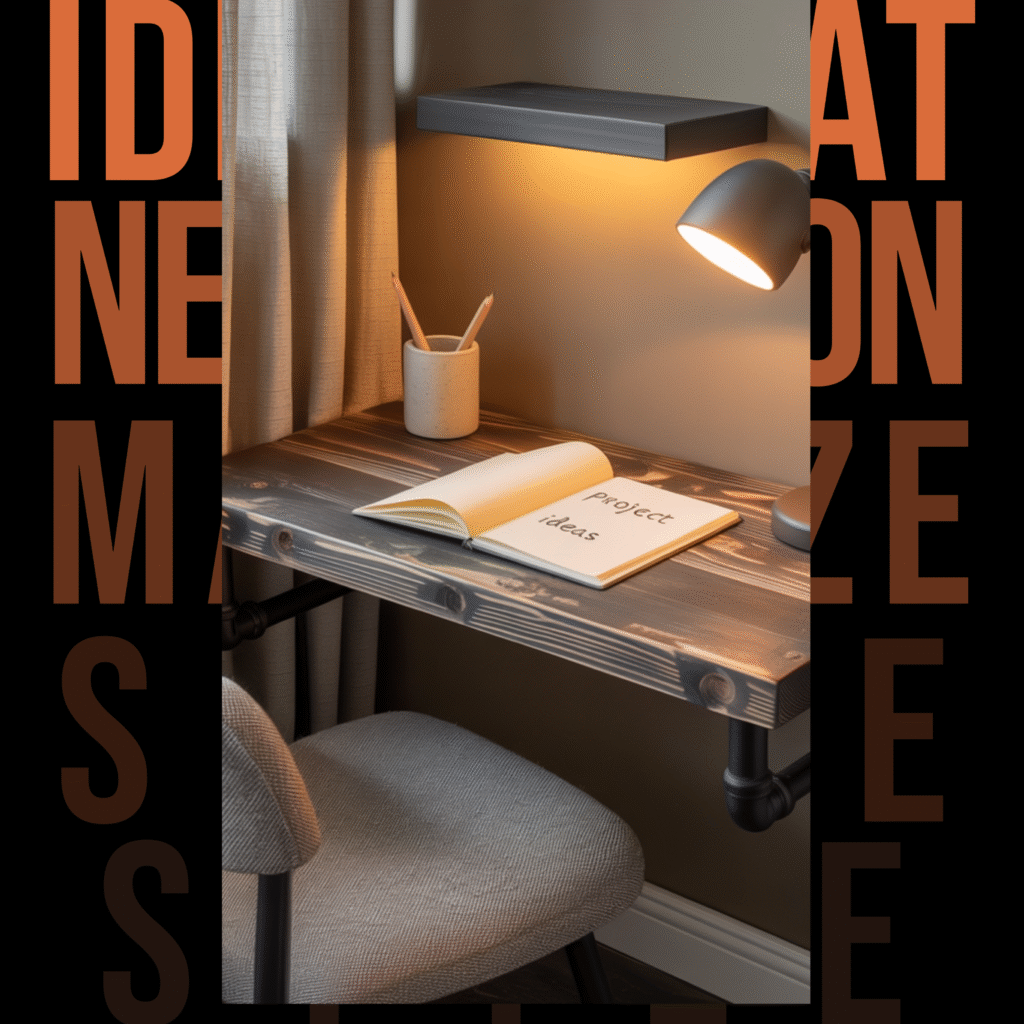
The Small Office Dilemma Most People Face
Working from a tiny space doesn’t have to mean sacrificing style or efficiency. Yet most people struggle with cluttered desks, poor lighting, and that claustrophobic feeling that kills productivity.
The problem isn’t your space size it’s how you’re using it. Small offices can actually be more focused and efficient than sprawling corporate setups when designed thoughtfully.
Smart design choices can make a 6×6 corner feel more spacious and inspiring than a traditional office. The secret lies in maximizing every inch while maintaining visual calm.
Corner Conquests: Claiming Dead Space
1. The L-Shaped Corner Command Center
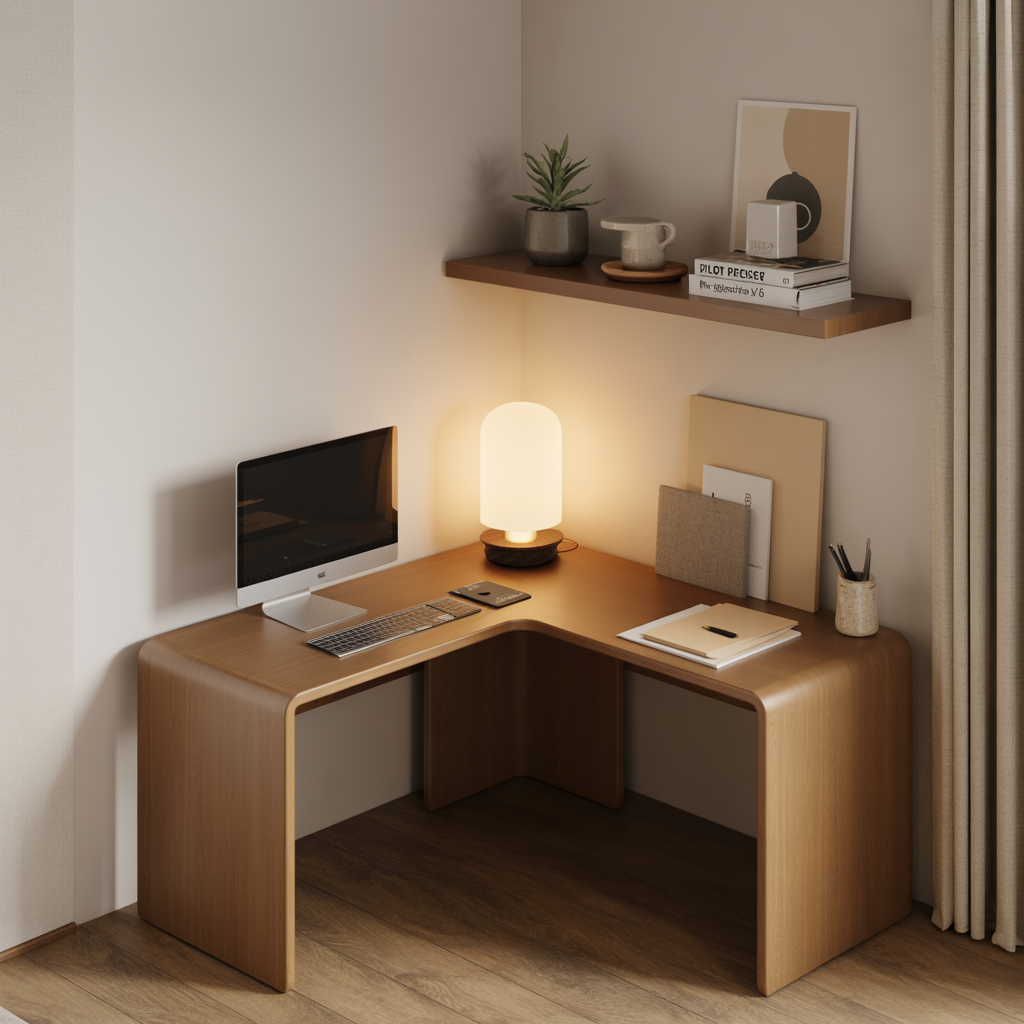
Corner nooks are productivity goldmines waiting to be discovered. An L-shaped desk configuration turns that awkward corner into your personal command center.
This setup naturally separates your computer work from your paper tasks. One side handles digital work while the other manages physical documents and supplies.
The corner placement keeps you tucked away from household distractions while maintaining connection to the room. It’s like having a private office within your living space.
Choose a desk that fits snugly into the corner without overwhelming the room. The goal is integration, not domination of your space.
2. Floating Corner Shelves for Vertical Victory
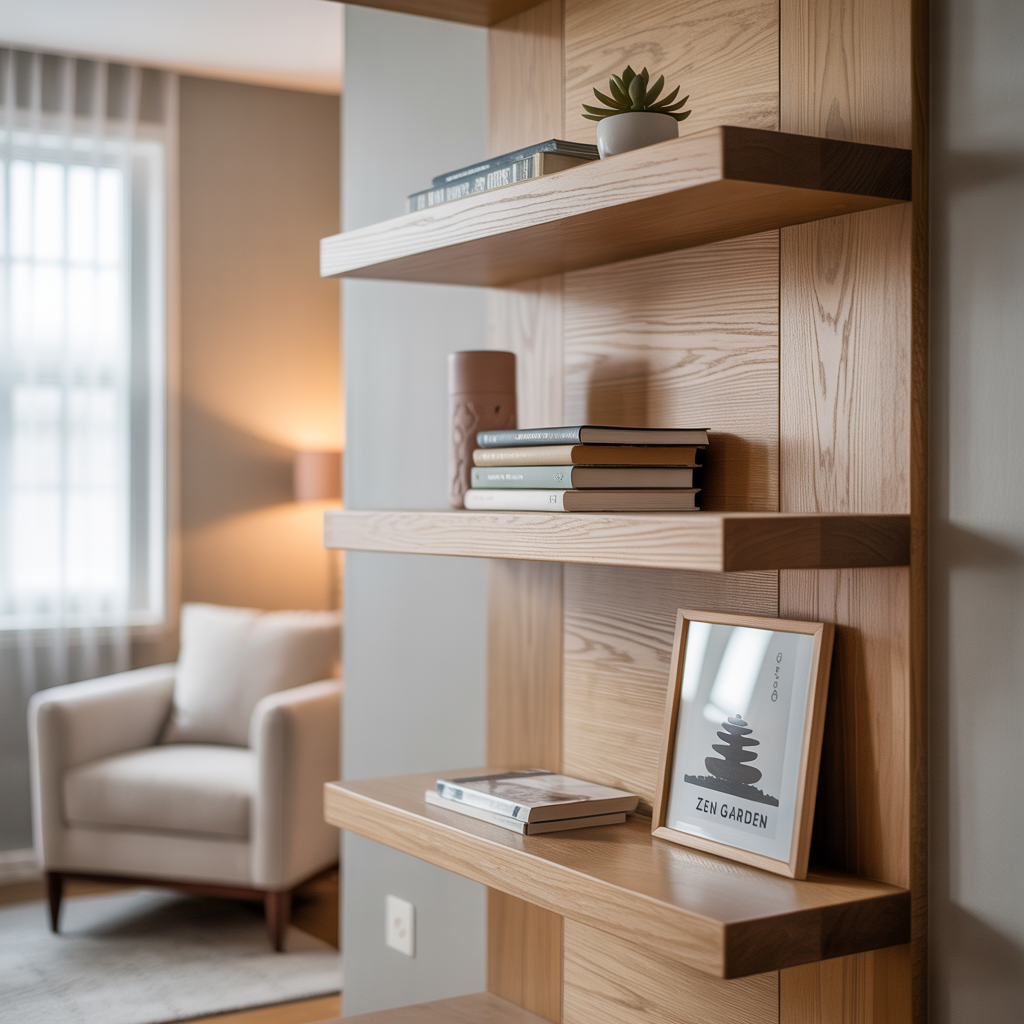
When floor space is precious, think vertically. Floating corner shelves draw the eye upward, making your ceiling feel higher while providing essential storage.
Install shelves at varying heights to create visual rhythm. Keep frequently used items at eye level, decorative pieces higher up, and rarely used supplies at the top.
The floating effect creates airiness that solid furniture can’t match. Your space feels less cluttered because you can see underneath and around everything.
Mix functional storage with personal touches a plant here, a photo there. This prevents the space from feeling sterile or purely utilitarian.
Hidden Sanctuaries: Secret Office Spaces
3. The Closet Office Retreat
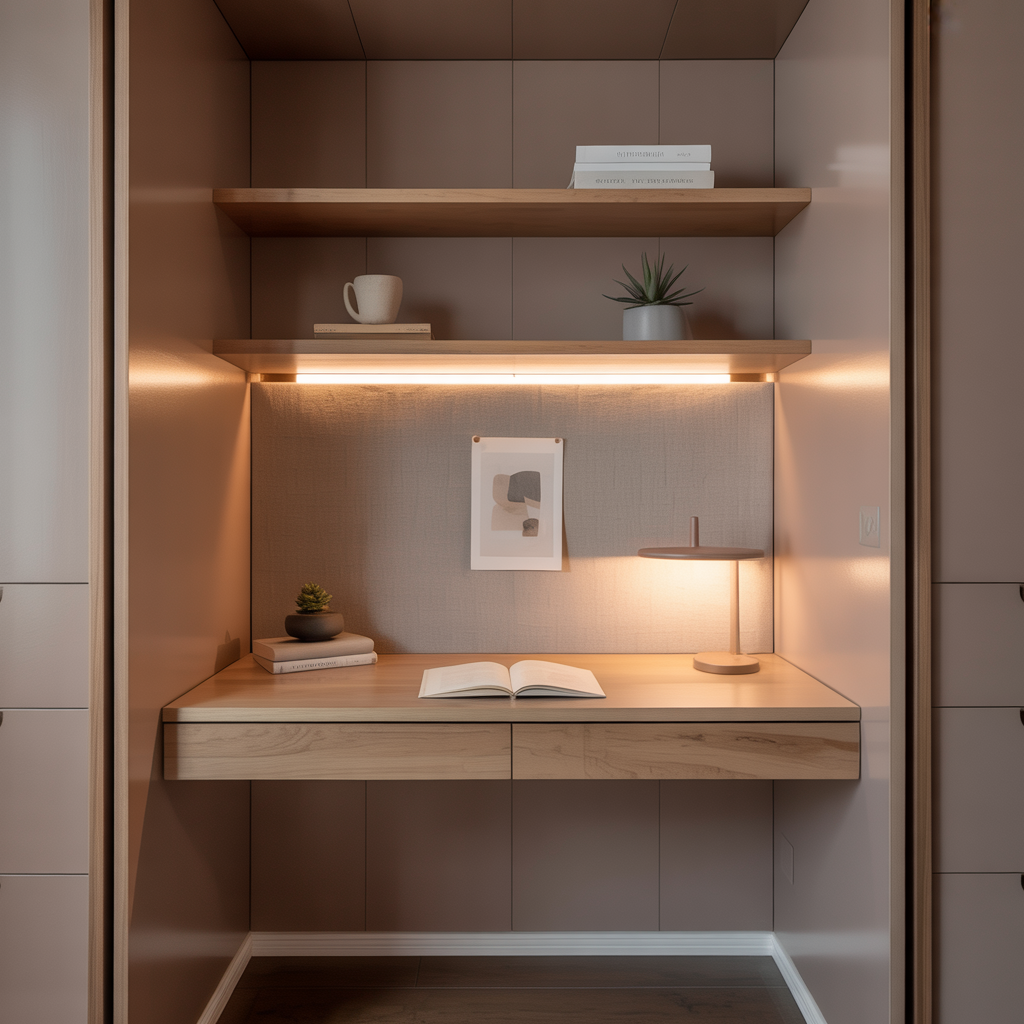
A converted closet becomes your personal productivity cave. Remove the doors, add proper lighting, and you’ve created a distraction-free zone that’s completely yours.
The enclosed feeling actually boosts focus for many people. It’s psychological shelter that helps your brain shift into work mode more easily.
Install a small desk that fits the closet width perfectly. Add warm lighting to prevent the space from feeling dungeon-like. A small lamp or LED strip transforms the atmosphere completely.
Keep the color palette light and add one statement piece perhaps a colorful bulletin board or inspiring artwork to prevent claustrophobia.
4. Murphy Desk Magic for Flexible Living
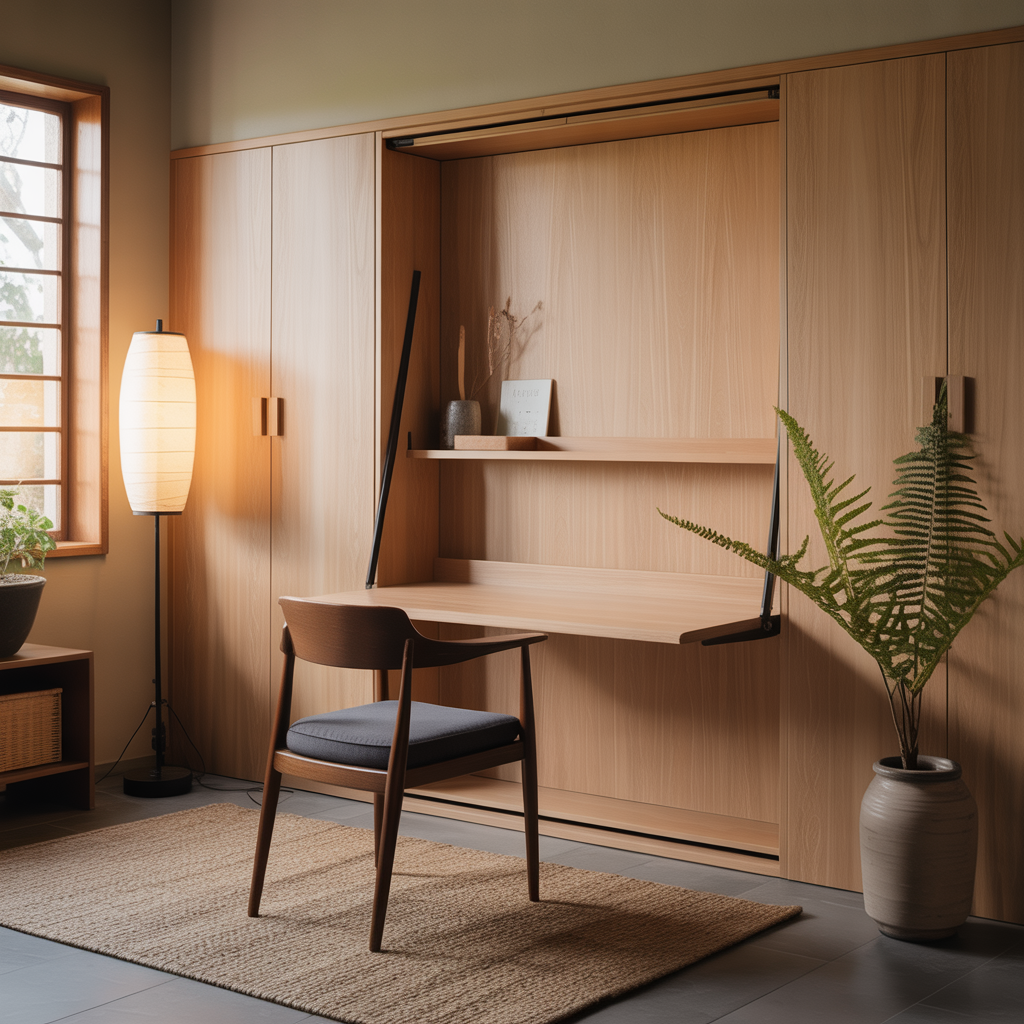
A Murphy desk that folds into the wall is perfect for studio apartments or multipurpose rooms. One moment it’s a workspace, the next it’s storage or decorative wall feature.
This solution works brilliantly when you need the room to serve multiple functions. Dinner parties don’t have to compete with your work setup.
Install the desk at the perfect height for your chair and body. When folded up, the clean wall line makes your room feel more spacious and organized.
Choose a design that looks intentional when closed. The fold-away mechanism should enhance your decor, not detract from it.
Light and Bright: Maximizing Visual Space
5. Window Desk for Natural Inspiration
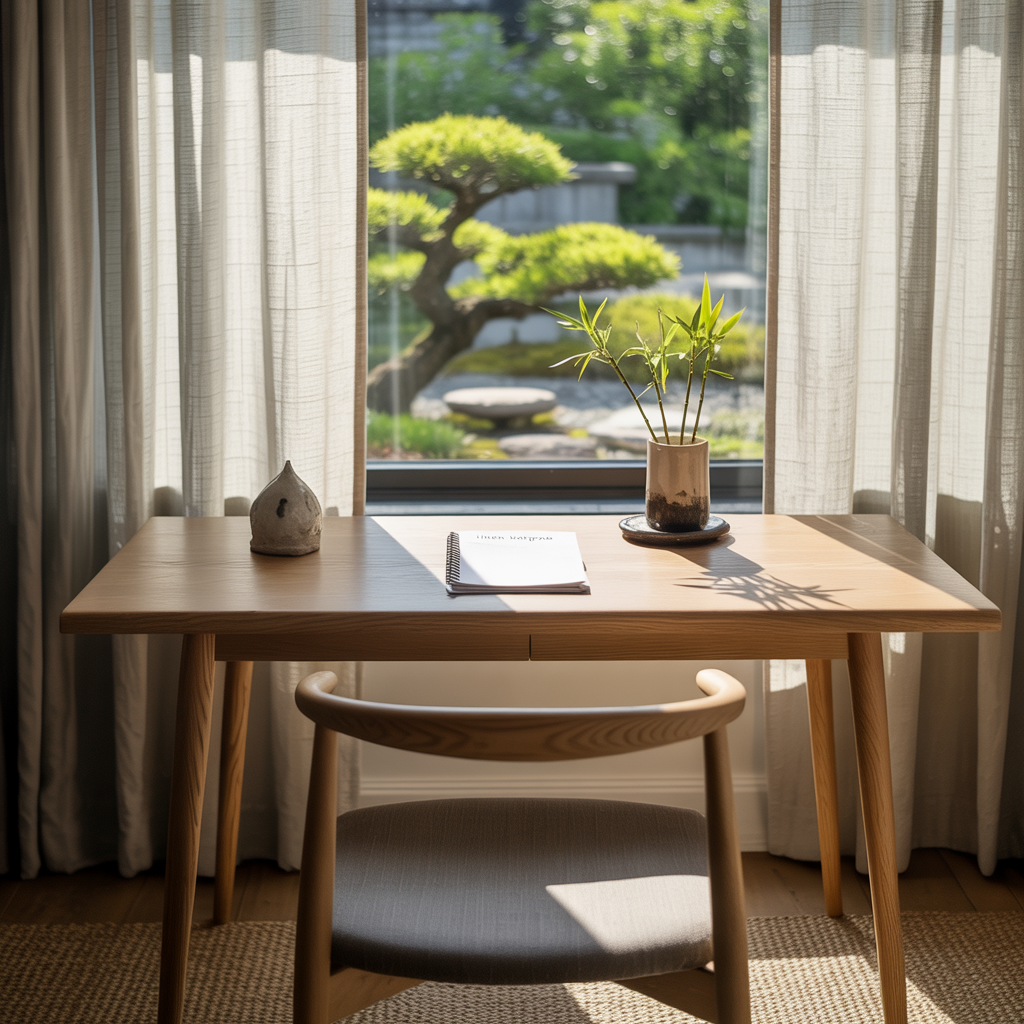
Positioning your desk under a window transforms work into a more pleasant experience. Natural light reduces eye strain while outdoor views provide mental breaks.
A slim desk that doesn’t block the window maintains the room’s openness. You gain workspace without sacrificing the light that makes small spaces feel larger.
The changing light throughout the day creates natural rhythm in your work. Morning light energizes, afternoon light sustains, evening light signals transition.
Add sheer curtains for privacy without losing light. They soften harsh sunlight while maintaining that connection to the outside world.
6. All-White Minimalist Haven
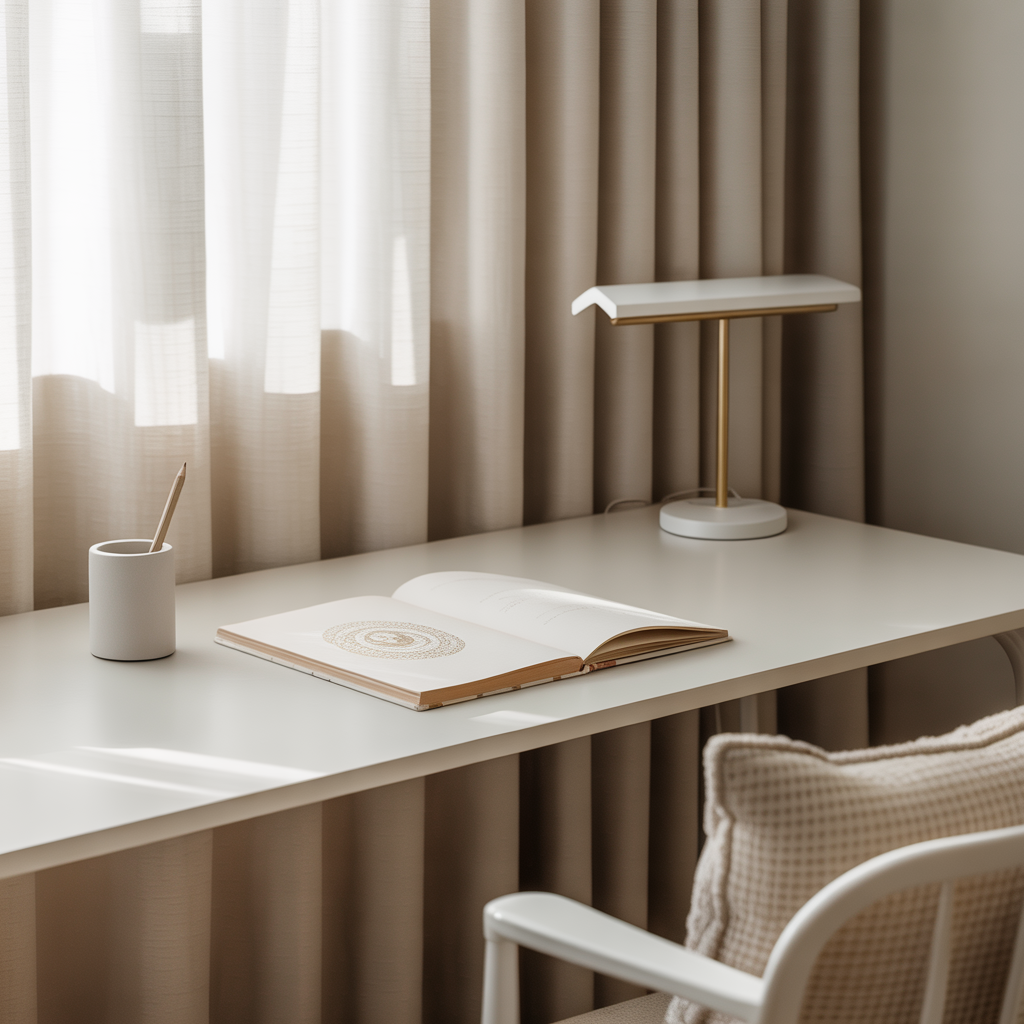
White reflects light better than any other color, making small spaces feel significantly larger. An all-white office setup maximizes this space-expanding effect.
Layer different white tones to avoid sterility cream, ivory, and pure white create subtle depth. Add texture through fabrics and materials rather than color.
Gold or brass accents provide warmth without breaking the light-enhancing theme. A brass lamp or picture frame adds sophistication.
Keep surfaces clear and organized. Clutter destroys the serene, spacious feeling that white creates.
Style with Substance: Personality-Driven Designs
7. Japandi Zen for Focused Calm
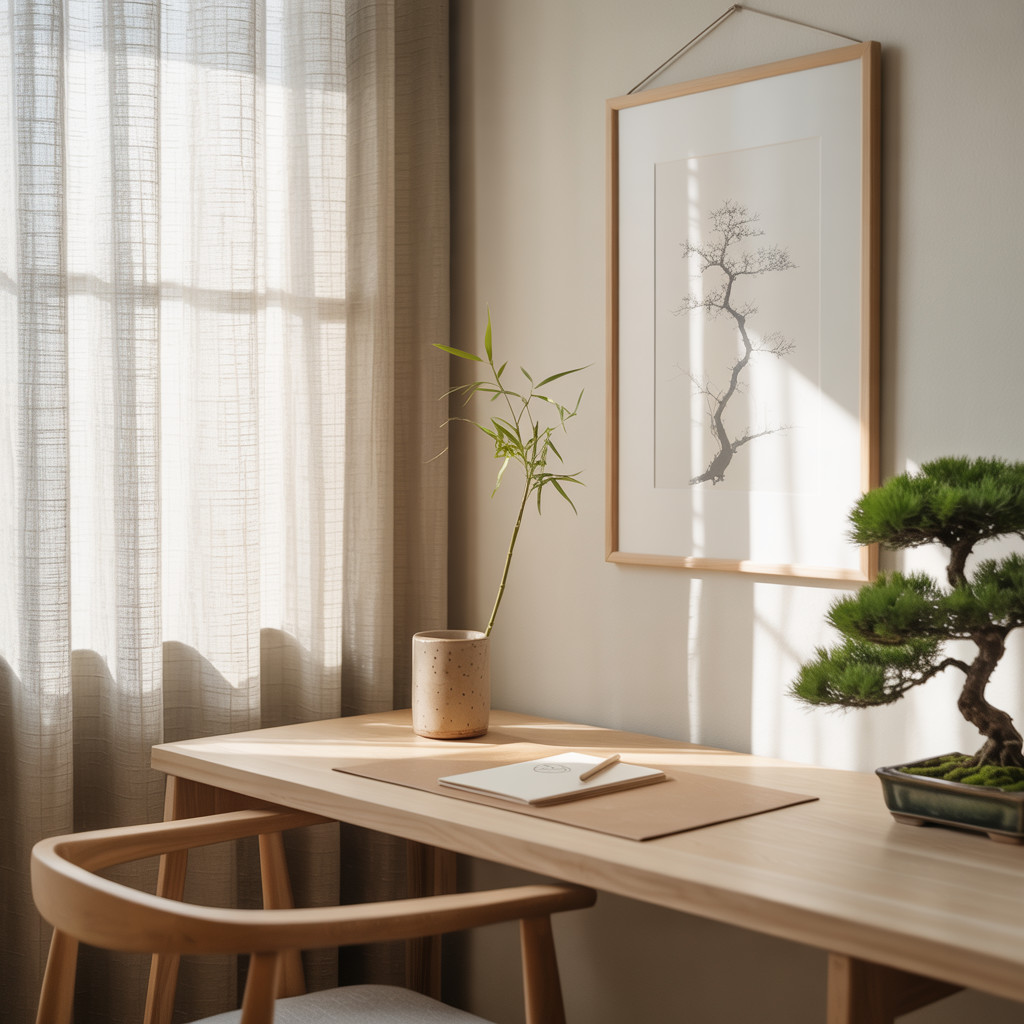
Japandi design combines Japanese minimalism with Scandinavian functionality. The result is a workspace that promotes deep focus through visual calm.
Natural wood tones paired with white or beige create warmth without distraction. Every element serves a purpose, reducing visual noise that fragments attention.
Add one carefully chosen plant and one piece of simple artwork. These elements bring life without creating clutter.
The key is restraint. Each item should earn its place through beauty, function, or both. Nothing exists purely for decoration.
8. Industrial Floating Desk with Character
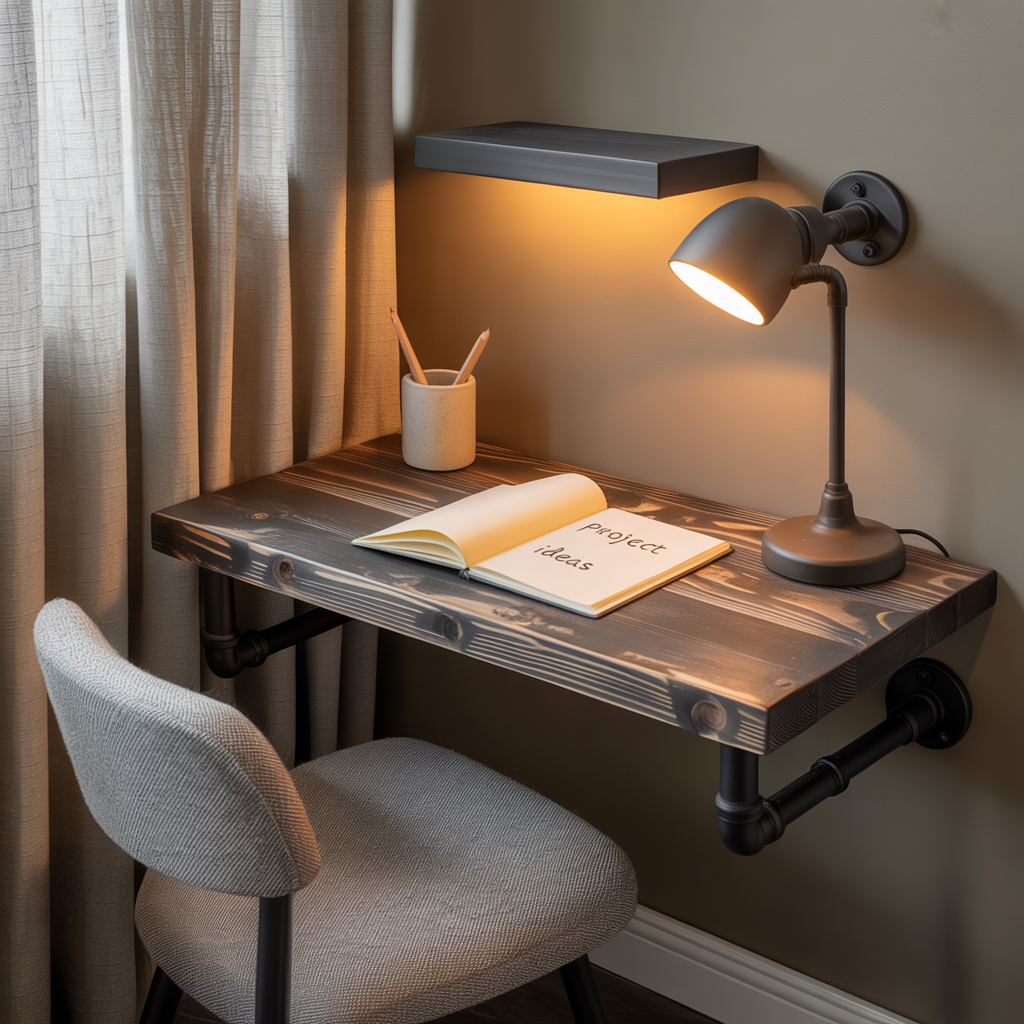
An industrial-style floating desk adds character while saving floor space. Exposed pipes or metal brackets become design features rather than eyesores.
The sturdy construction handles heavy equipment while the floating design keeps sight lines clear. Your space feels more open despite the robust materials.
Pair industrial elements with softer textures a fabric chair or wooden accessories. This prevents the space from feeling too harsh or cold.
The key is balance. Industrial elements provide structure and interest, while softer materials add comfort and warmth.
Smart Storage Solutions: Organization That Works
9. Built-In Storage for Seamless Integration
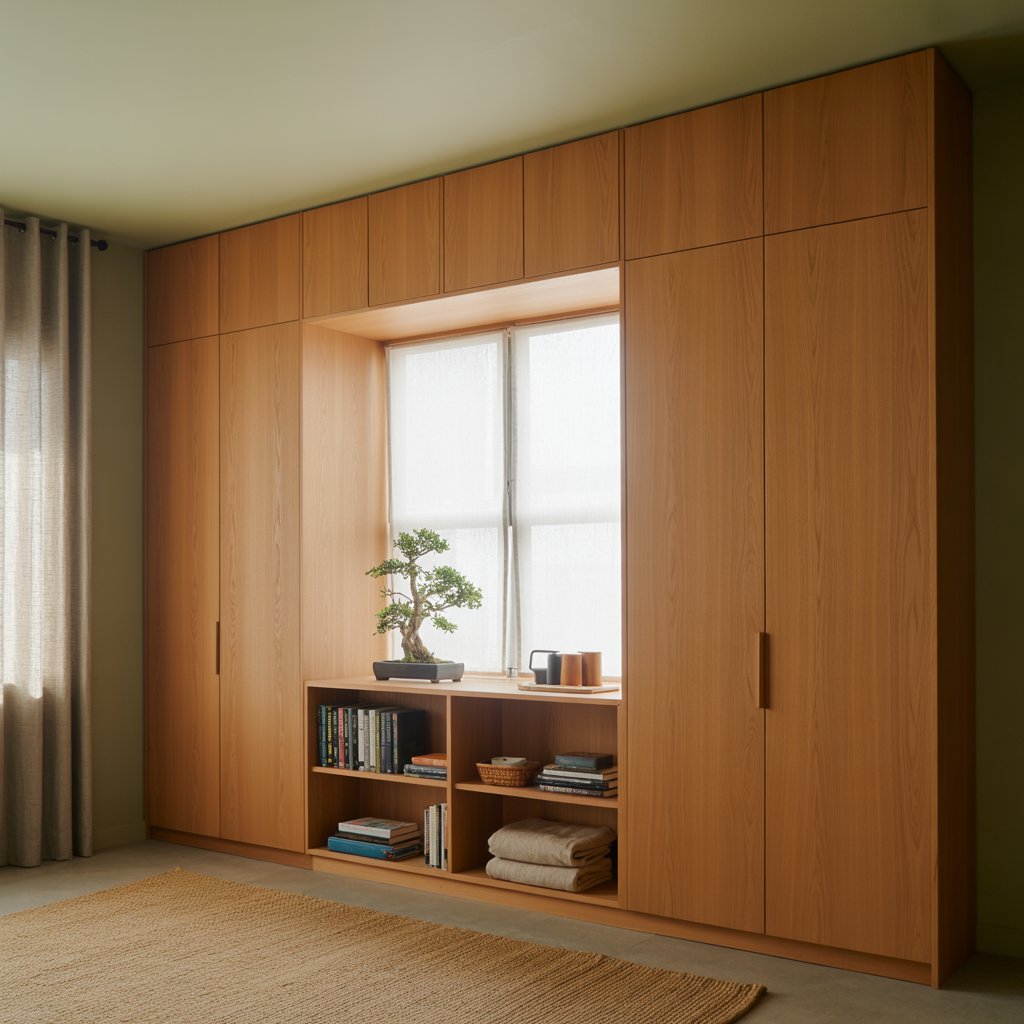
Custom built-ins look like they belong in your space because they’re designed specifically for it. Every inch serves a purpose without looking cluttered.
Built-ins can wrap around architectural features like windows or doors, making the most of awkward spaces that standard furniture can’t accommodate.
The integrated look makes your office feel intentional rather than squeezed into available space. It becomes part of the room’s architecture.
Choose designs that complement your home’s existing style. The office should feel like a natural extension of your living space.
10. Under-Stair Office for Unused Potential
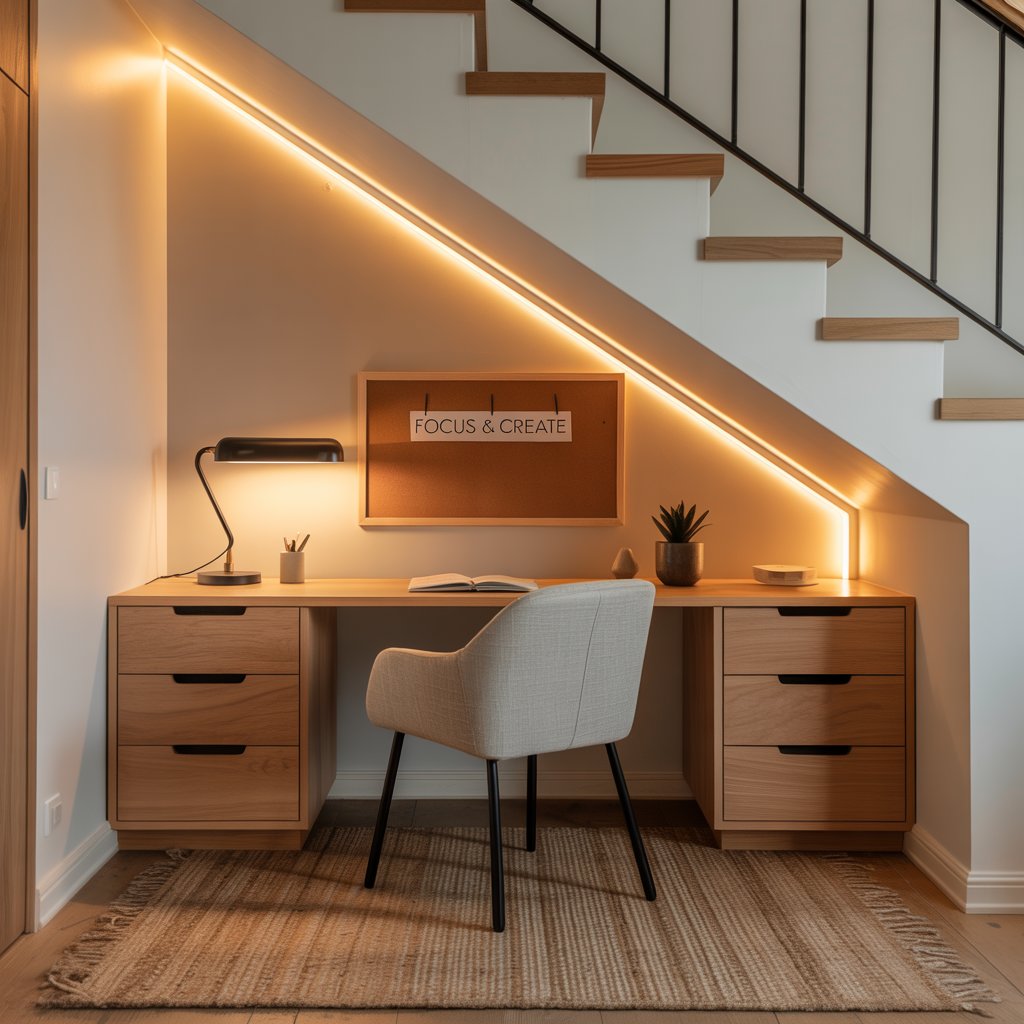
The space under stairs is often wasted storage when it could be prime office real estate. A custom desk that follows the stair angle maximizes this hidden opportunity.
The sloped ceiling creates a cozy, cave-like feeling that many people find conducive to focused work. It’s naturally separated from household activity.
Install proper lighting to overcome the typically dim conditions. LED strips or a stylish desk lamp can transform the atmosphere completely.
Keep the color palette light to prevent the space from feeling cramped. White or light wood tones work best in these naturally darker areas.
Making Your Small Office Work for You
The best small office isn’t about cramming everything in it’s about choosing the right elements for your specific needs and space. Start with one element that excites you most.
Consider your work style. Do you need lots of surface space for spreading out papers, or do you work primarily on a computer? Your habits should drive your design choices.
Remember that small doesn’t mean limiting. Many successful entrepreneurs started in tiny spaces that forced them to be creative and focused.
Your small office can become your most productive space when every element is chosen with intention. Sometimes constraints spark the most innovative solutions.
The goal isn’t to make your space look bigger it’s to make it work better. When functionality meets style in a small space, the result often surpasses larger, less thoughtful offices.

Add a Comment